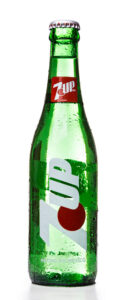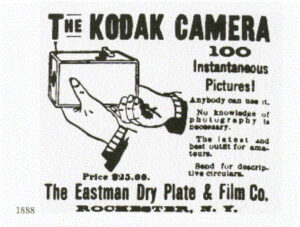

From product development to production to sales, modern corporations run on numbers. The power of statistical analysis has been driving business since the days of Henry Ford and Frederick Winslow Taylor, who pioneered the use of scientific methods in industrial production. Numbers worked best compared to instinct. Now, no Fortune 1000 company puts out a memo or orders supplies without some kind of statistical analysis.
Statistical analysis is just as valuable when it comes to marketing as production, and that’s where market research analysts come into the picture.
So, what is it exactly that makes market research analysts different from other types of statistical analysts? Why is number-crunching not enough for market research jobs when it works just fine for, say, financial analysts?
Sponsored School(s)
In a word, it comes down to people.
Markets are shaped by human decision makers. Whether those are individuals out shopping for parkas at Black Friday sales or operations managers booking an order for a new vehicle fleet, the choices they make are not based on numbers alone. Factors like culture, media, and personal preference all play roles.
Any company that expects to out-sell the competition has to account for those factors. And that means there are market analyst jobs to be found in almost every industry.
Market researchers help organizations figure out important details like:
- Demographic profiles of individuals or companies likely to purchase their products or services
- Market demands and preferred product and packaging designs
- Expected pricing and volume information
That all feeds important strategic decisions that every company has to make every day. And that makes good market research analysis a pretty in-demand product itself.
A liberal arts education is just about a perfect fit for someone hoping to land the hottest marketing analyst jobs. The combination of arts and sciences in liberal studies almost perfectly reflects the combination of creativity and hard quantitative analysis that market analysts use on the job every day.
Everything that Goes Into the Market Research Analyst Job Description
 The day-to-day job of a marketing analyst is similar to most modern office jobs. You go to work, you log in, you spend a lot of time answering emails, making phone calls, and chasing down information on the internet or in company files.
The day-to-day job of a marketing analyst is similar to most modern office jobs. You go to work, you log in, you spend a lot of time answering emails, making phone calls, and chasing down information on the internet or in company files.
The real work in marketing research jobs happens in your head, however. Market researchers take in information from a wide variety of sources, including:
- Experiments or tests they have devised to measure market response
- Internal sales and forecasting data
- Public sources of information ranging from weather forecasts to parking data
They then analyze that data to make estimates of future demand, pricing tolerance, and other consumer behavior. And they use those estimates to help build strategies for improving market performance for their organizations.
Big Data Has Come To Dominate the Market Analyst Job Description
Market research analysts have always counted on data to inform them and help them draw conclusions. But the tools and resources they have available to support that work have made dramatic leaps over the past few decades as the amount of information collected digitally has exploded.
Market research jobs are data-heavy in an era where data has become both overwhelming and more valuable than ever.
The advent of Big Data has maybe revolutionized market analyst jobs more than any other. When you think about the stories that characterize the new world of Big Data, most of them are rooted in the business of marketing research:
- The story of the pregnant teen who was outed to her parents by Target’s marketing data analysis that started sending her coupons for cribs and baby clothes
- Home Depot’s use of customer browsing history to set higher prices for some customers
- The magic of the Netflix recommendation algorithm based on mass viewing histories
Although there are many other applications for big data and quantitative analysis, marketing research analysts are driving both the innovation and applied uses in the field today. Marketing research jobs demand an intuitive understanding of how the collection of large sets of sometimes very different kinds of information can lead to surprising and useful conclusions about how people make their purchasing decisions.
Market research analysts spend a lot of time immersed in spreadsheets. Skill using Excel and advanced functions like pivot tables, macro-writing, and graphing is mandatory.
Studies Reveal That Good Marketing is “Matter Over Mind”
 Market researchers are constantly engaged in a series of tests and analysis to find better ways to sell more product to more people at higher prices.
Market researchers are constantly engaged in a series of tests and analysis to find better ways to sell more product to more people at higher prices.
Along the way, some of those researchers have come across genuinely original scientific findings. Researchers at 7-up who were testing new product packaging found that when an identical formula was served to people from a green can versus a can with more yellow on it, those with the yellow can reported that they experienced a more lemony flavor.
And have you ever wondered why so many airline logos have blue as their primary color? It’s not because the sky is blue—it’s because decades of market research has found that blue is the color that most inspires feelings of trust. Turns out trust is pretty critical to selling tickets when you are about to pack several hundred people in a round tube filled with jet fuel and hurtle it through the air at hundreds of miles per hour.
Marketing research jobs give you the opportunity to explore the mysteries of both markets and human behavior to come across your own unique findings and put them to use in marketing strategies both nationally and worldwide.
Many market researchers go even further, and do their work in more advanced data processing and analysis tools like Tableaux, or even custom-built and coded R and Python programs. If they aren’t hands-on with those tools, they at least have enough knowledge of programming and analytical processes to work with data scientists to get the results they need.
Storytelling Is Another Important Part of the Market Research Analyst Job Description
 Market research analysts deal in more than just data, though. Their job is to act as translators of the statistical data about market trends and behavior, turning the numbers into stories that convey the information in ways both accurate and useful to the people who need to understand it. They are storytellers as much as data crunchers.
Market research analysts deal in more than just data, though. Their job is to act as translators of the statistical data about market trends and behavior, turning the numbers into stories that convey the information in ways both accurate and useful to the people who need to understand it. They are storytellers as much as data crunchers.
So market research analysts also can expect to work with executives and managers, both directly and by writing reports, memos, and presentations to distribute their findings. Most analysts also have a role in recommending strategies based on their findings. They pull in data from inside their organizations as well and find the best ways to match capabilities with demands and opportunities.
It’s the combination of the hard scientific work of accurate statistical analysis with the creative effort of weaving meaningful information into relatable plots that makes liberal arts a uniquely useful way to get into market research jobs. As a course of study that combines the hard sciences with in-depth studies of literature, psychology, and rhetoric, a liberal studies degree can build both the analytical and lyrical parts of your mind toward a marketing research job.
Freelance Marketing Research Jobs Allow You To Go Remote and Set Your Own Schedule
Some market researchers prefer to forge their own path in the industry. If you have the skills and the knowledge, it’s entirely possible to go freelance, performing marketing analysis as a hired gun for whoever shows up with the biggest offer.
Of course, major corporations aren’t just going to come out of the woodwork to offer you burly consulting checks at random. You’d better build your chops and get a reputation either as a specialist in your industry or as a wizard with analytical techniques first. And you’ll have to put some of them to use marketing your own services.
Freelancing is a great way to make sure you get a variety of work and a maximum amount of freedom as a market research analyst, however. Not everyone is built to run their own business, but you may be able to build the next big marketing analysis kingdom if you have the drive and the education. Naturally, the breadth and variety of a liberal arts education is a great preparation for all the various skills you will have to engage as a freelancer and small business owner.
How To Become a Market Research Analyst
Market research analysts need to show exceptional attention to detail and have excellent organizational skills. Although you must have skills to express your findings in relatable ways, you also have to have the scientific chops to back up every conclusion with verifiable data.
Market research analysts tend to come to the career from two different directions.
- They start off as professionals within the industry they are working with and then shift into market research roles in that industry
- They specialize as market researchers and then decide which industry to specialize in
There are two very different educational paths that you might follow for either of those tracks.
Marketing Research Jobs Demand a College-level Education
You’ll need a bachelor’s degree at a minimum to get into marketing research jobs. In some cases, particularly in the upper levels of the profession, a master’s degree may be needed.
In most cases, though, employers aren’t too fussy about exactly what major you pursued in order to get that degree. If you were on the first track, coming at marketing research from the perspective of a professional in that market, then it’s going to be natural for you to have a degree in that field. If you are on the second path, with market research on your radar as you are picking your major, then any one of a number of different degrees can give you the right kind of skills and background:
- Marketing
- Statistics
- Communications
- Economics
That’s because marketing research blends a variety of different disciplines to come at the reality of consumer perspectives and behavior.
Statistical analysis of information is at the core of what market researchers do. Understanding the basic rules of quantitative analysis and the various mathematical and algorithmic tools used to validate statistical proofs is key.
Technology has become a huge feature in the day-to-day experience of marketing analyst jobs. Not only are you going to be using a lot of highly complex information technology systems to analyze data and create your reporting, but you may find that IT itself is one of the best tools for driving data collection.
Web and product development skills are always handy for market researchers. With so many services and so much shopping moving online today, market research analysts have an unprecedented opportunity to create experiments to better understand their customers and the purchasing decision. Using user design techniques like A/B testing, they can pit scientific studies of user reactions to different design choices up against real-world decisions.
Written and verbal communication skills are needed for market researchers to present their conclusions to executives and staff. The best research conclusions in the world are worthless if you can’t get your point across to decision makers who can use them.
Using a Liberal Arts Degree as Your Springboard to Market Analyst Jobs
Naturally, when you are talking about any sort of interdisciplinary skillset, majoring in liberal arts comes to the forefront.
Liberal studies programs, at both the bachelor and master’s degree levels, offer a tremendous breadth of subjects to study. While the core elements of arts and sciences are always present, these degrees typically allow you to structure your studies to focus in almost any relevant area or combination of areas.
So, for a liberal studies major who plans to go into marketing research, it might be natural to put together a course of study that includes classes in:
Research – With its exploration of history and the classics, the liberal arts is a natural place to go to learn research skills. You’ll often have coursework that is specifically designed to:
- Help you find your way around libraries
- Make sense of different types of data, from books to census rolls
- Weigh the accuracy and applicability of data
- Relate different types of data to one another to draw new connections and conclusions
Writing – Liberal studies majors do a lot of writing regardless of their concentration. The essay is one of the primary things that liberal arts classes are structured around, and there are plenty of persuasive writing assignments along the way. On top of that, liberal arts involves plenty of reading, which helps you learn the forms and practices of excellent writing. All of these talents come together for future market researchers, who have to adopt the tools of rhetoric and grammar to help make their case in describing trends and strategies.
Statistics – An arts and sciences education comes with many opportunities to take scientific and mathematically-oriented courses. Statistical analysis classes are some of the most naturally aligned with the liberal studies major, teaching you how to quantify and analyze various social and cultural movements and values. For market researchers, they offer a gateway to analysis of markets and consumer behavior in rigorous, scientifically-proven ways.
There are even concentrations available in liberal arts degrees for data analytics.
A liberal arts degree also delivers some high-level talent in soft skills that are commonly cited as crucial in market research jobs.
- Critical thinking
- Interpersonal communications
- Problem-solving
You exercise those skills every day as a market research analyst, breaking down data, explaining it to other staff, and figuring out how to mesh corporate capabilities with the market trends you uncover.
A Master’s Degree Can Boost Your Skills To Qualify for the Top Marketing Analyst Jobs
A master’s in liberal arts doubles down on all the kinds of skills that you build at the bachelor’s level for market research jobs.
Research itself may be the biggest talent that anyone takes away from a MALS program. You’re expected to dive deep into your area of study, turning up nuggets of information from the most unexpected sources and putting them together to develop insights for your thesis project that no one else has discovered.
Of course, during the course of all that research, you’re going to be developing an unprecedented level of subject-matter expertise into whatever you are researching. You can use that to your advantage by developing an expert-level perspective on the markets that you specialize in.
Market Research Analysts See Past Trends and Spot Technological Revolutions
 Market research analysts work in a competitive environment, so not every idea is going to be a winner. But the biggest marketing research failures usually come from poor strategic management, not bad marketing analysis within the company.
Market research analysts work in a competitive environment, so not every idea is going to be a winner. But the biggest marketing research failures usually come from poor strategic management, not bad marketing analysis within the company.
That was the case with Kodak, which missed out on one of the biggest new markets of the digital age after inventing the technology that made it possible: digital photography.
Kodak’s scientists had been working on solid-state imaging sensors since the 1970’s. They developed the first megapixel-quality sensor in 1986, well ahead of the competition.
Extensive research by the company’s market intelligence unit showed that digital photography would come to dominate the market within the decade. But corporate executives continued to double-down on film-based cameras, even introducing models with digital capabilities—but which still required the use of awkward, expensive film for the final prints.
Kodak filed for bankruptcy in 2012, sold off most of its digital patents, and announced plans in 2020 to shift toward producing pharmaceutical materials… a sad end for a storied American company that ignored its market research one time too often.
Market Research Analyst Salary and Job Prospects
The Bureau of Labor Statistics tracks the employment and salary levels of market research analysts, and boy do they have some good news for you: between 2020 and 2030, the number of jobs for market researchers is expected to shoot up by 22 percent, bringing more than 163,000 new positions into play. That’s a much faster rate of growth than average.
The median salary for market research analysts for 2020 came in at a a healthy $65,810 per year. Those in the top ten percent, though, with the most experience and highest levels of education, earned more than $127,410.
That might make market research one of the best ways you can make money with a liberal arts degree!
The option to start your own business or work freelance comes with plenty of benefits both tangible and intangible as well. The flexibility and freedom that comes with working as a consultant or independent market researcher is the ultimate goal for some of the most talented people in the field. And liberal studies offers you the broad set of skills you need to make an independent market research agency a success.
Salaries for Marketing Analyst Jobs Are Also Defined by Location and Industry
Of course, your salary at both the median and top ends will be influenced by both the industry you work within and the area of the country where you are working. Not every industry has the same requirements; some need researchers who are more skilled in data analysis, while others may lean toward softer skill demands with lower base salaries.
The median salary levels in the top industries where market research analysts are employed bracket the overall median salary:
- Publishing industry - $79,040
- Management of companies and enterprises - $77,110
- Finance and insurance - $73,800
- Wholesale trade - $64,170
- Management, scientific, and technical consulting services - $62,400
Location can be a big differentiator, too. Local cost of living is one of the biggest drivers of salaries overall. But, of course, if costs in your region are high, a higher salary doesn’t necessarily get you a better living. You’ll have to compare what you can get to your local situation—or go remote!
You can also see some big differences in median salary levels across these states representing different regions of the country:
- New York : $85,090
- California : $83,150
- Illinois : $68,270
- Texas : $76,840
- Florida : $62,110
- Missouri : $66,020
- Georgia : $69,130
- Washington : $92,350
No matter what, market research jobs open up a clear avenue to making a great living with a liberal studies degree. With exciting and demanding ways to exercise all your talents, they reward hard work and broad knowledge—just like liberal arts in general!
2020 US Bureau of Labor Statistics salary figures and job growth projections for Market Research Analysts reflect national data not school-specific information. Conditions in your area may vary. Data accessed January 2022.






